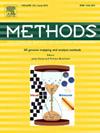CSSEC: An adaptive approach integrating consensus and specific self-expressive coefficients for multi-omics cancer subtyping
IF 4.2
3区 生物学
Q1 BIOCHEMICAL RESEARCH METHODS
引用次数: 0
Abstract
Cancer is a complex and heterogeneous disease, and accurate cancer subtyping can significantly improve patient survival rates. The complexity of cancer spans multiple omics levels, and analyzing multi-omics data for cancer subtyping has become a major focus of research. However, extracting complementary information from different omics data sources and adaptively integrating them remains a major challenge. To address this, we proposed an adaptive approach integrating consensus and specific self-expressive coefficients for multi-omics cancer subtyping (CSSEC). First, independent self-expressive networks are applied to each omics to calculate coefficient matrices to measure patient similarity. Then, two feature graph convolutional network modules capture consensus and specific similarity features using the topK relevant features. Finally, the multi-omics self-expression coefficient matrix is constructed by consensus and specific similarity features. Furthermore, joint consistency and disparity constraints are applied to regularize the fusion of the self-expressive coefficients. Experimental results demonstrate that CSSEC outperforms existing state-of-the-art methods in survival analysis. Moreover, case studies on kidney cancer confirm that the cancer subtypes identified by CSSEC are biologically significant. The complete code can be available at https://github.com/ykxhs/CSSEC.
求助全文
约1分钟内获得全文
求助全文
来源期刊

Methods
生物-生化研究方法
CiteScore
9.80
自引率
2.10%
发文量
222
审稿时长
11.3 weeks
期刊介绍:
Methods focuses on rapidly developing techniques in the experimental biological and medical sciences.
Each topical issue, organized by a guest editor who is an expert in the area covered, consists solely of invited quality articles by specialist authors, many of them reviews. Issues are devoted to specific technical approaches with emphasis on clear detailed descriptions of protocols that allow them to be reproduced easily. The background information provided enables researchers to understand the principles underlying the methods; other helpful sections include comparisons of alternative methods giving the advantages and disadvantages of particular methods, guidance on avoiding potential pitfalls, and suggestions for troubleshooting.
 求助内容:
求助内容: 应助结果提醒方式:
应助结果提醒方式:


